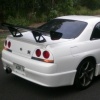Bmw's Front-Wheel Drive Car Spied
Announcements
-
Similar Content
-
Latest Posts
-
I would be lying if I said I wasn't interested in what MCM were going to do with the NC I really enjoy their banter and occasional collaborations (like Alan from TSF, Ben from BCW, or any of the Haltech guys throwing around their experience), and I have probably watched everything they have put out
-
Not yet, we basically drove it to a private road, got the logs and drove it straight back. I think I need a new passenger seat belt after the mrs squeezed the life out of it.
-
Sounds insane! 🤤🤤🤤 Do you have any vids of it driving? A flyby would be nice!
-
By soviet_merlin · Posted
Hmpf, won't be able to make it after all unfortunately. Next time.
-








Recommended Posts
Create an account or sign in to comment
You need to be a member in order to leave a comment
Create an account
Sign up for a new account in our community. It's easy!
Register a new accountSign in
Already have an account? Sign in here.
Sign In Now